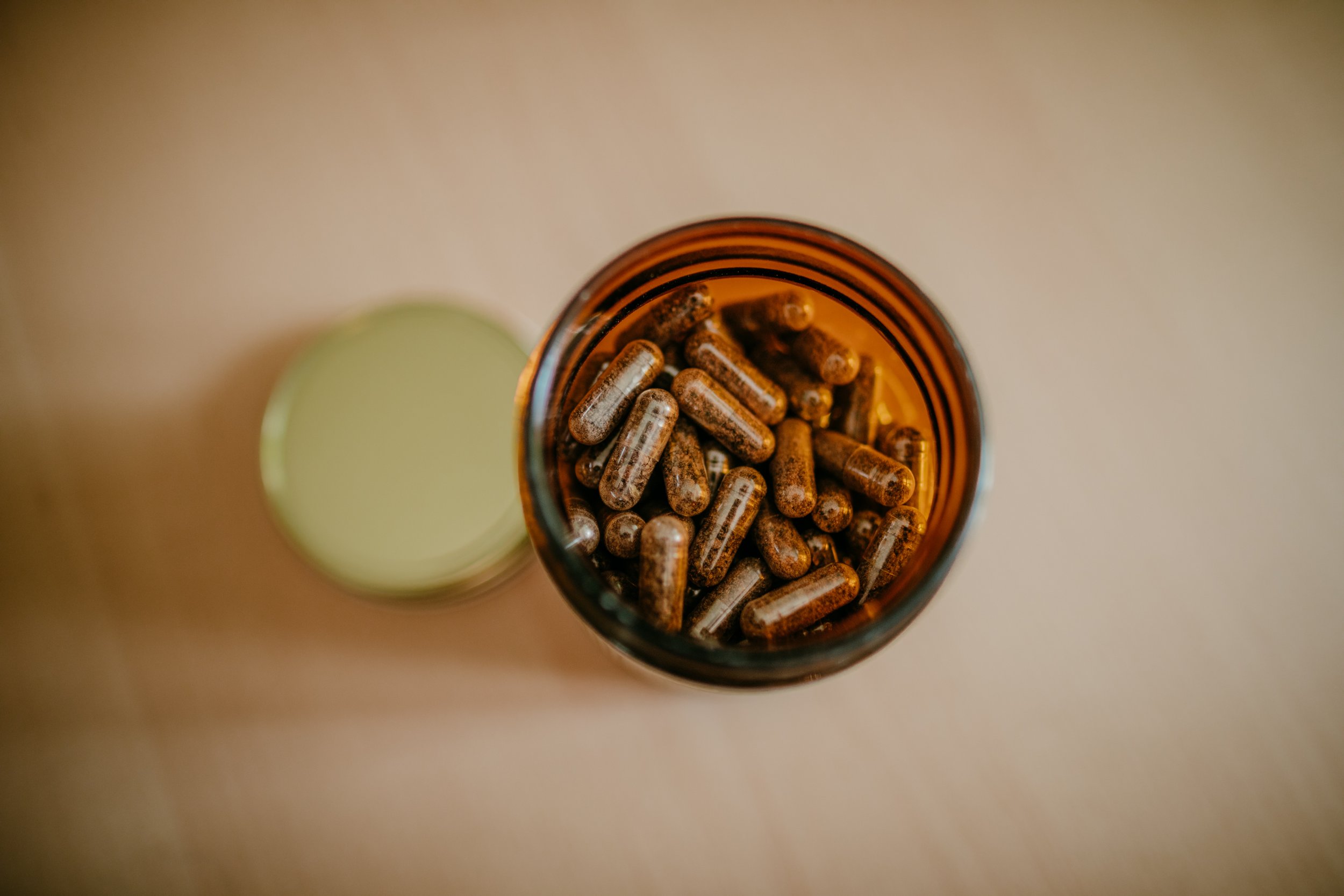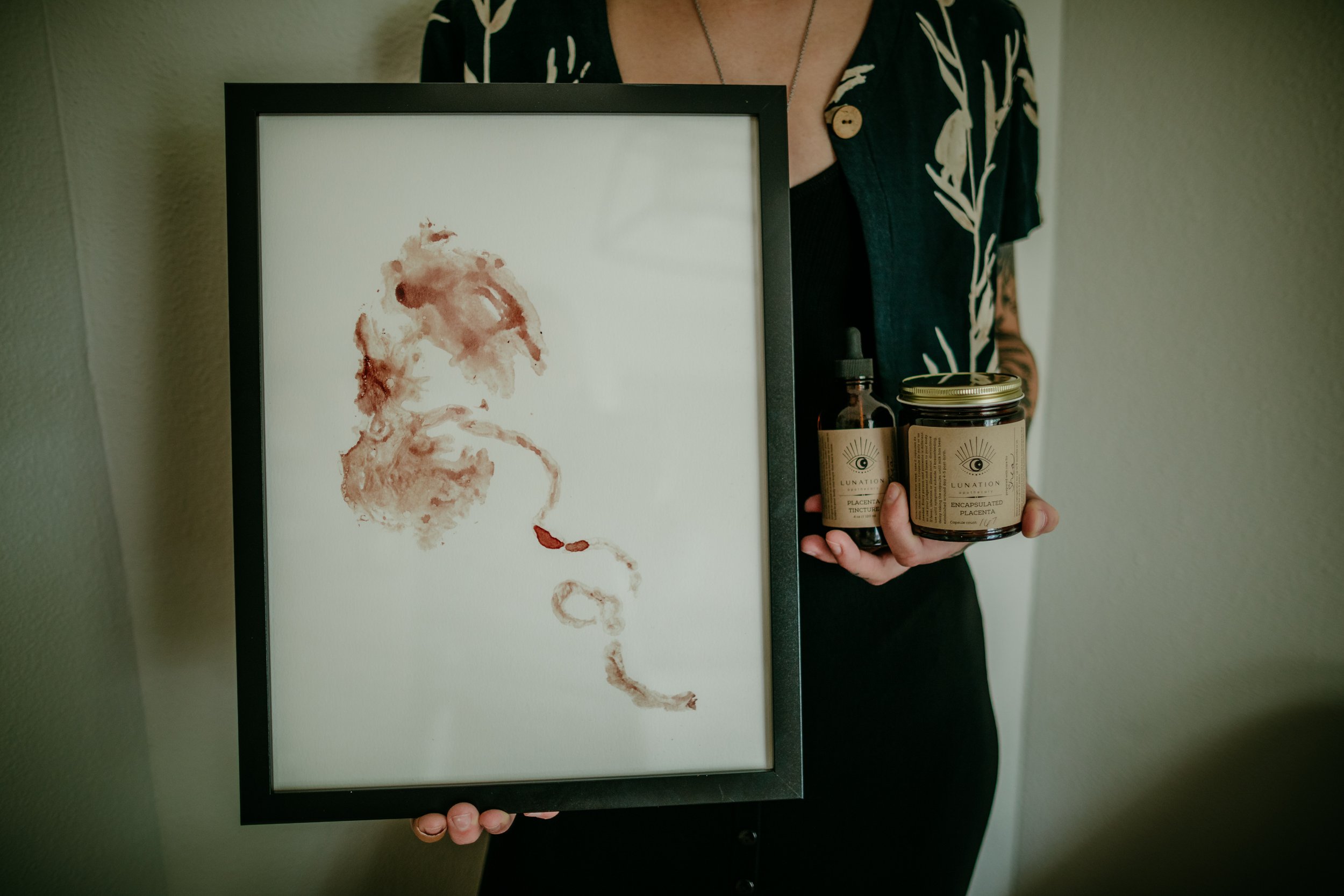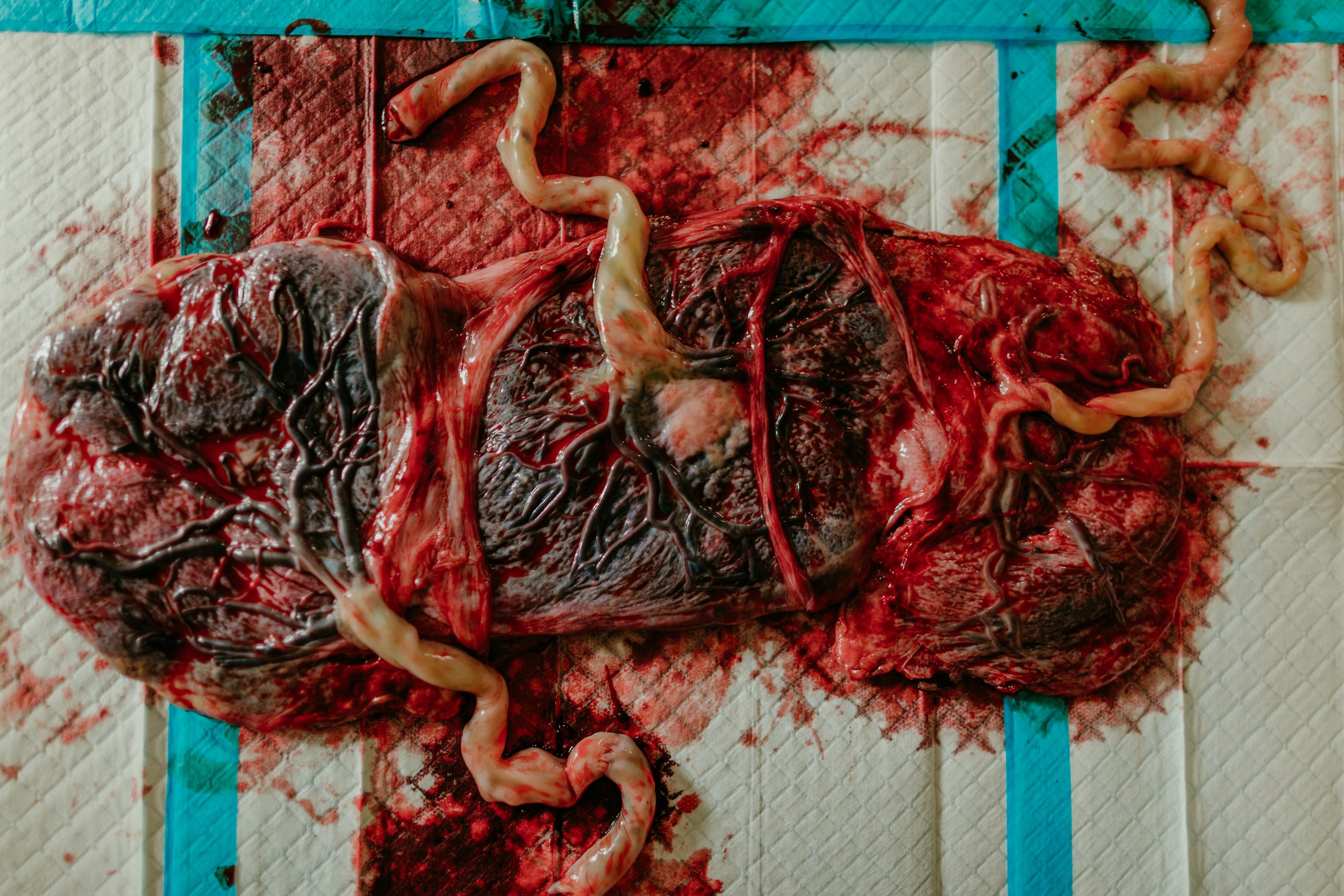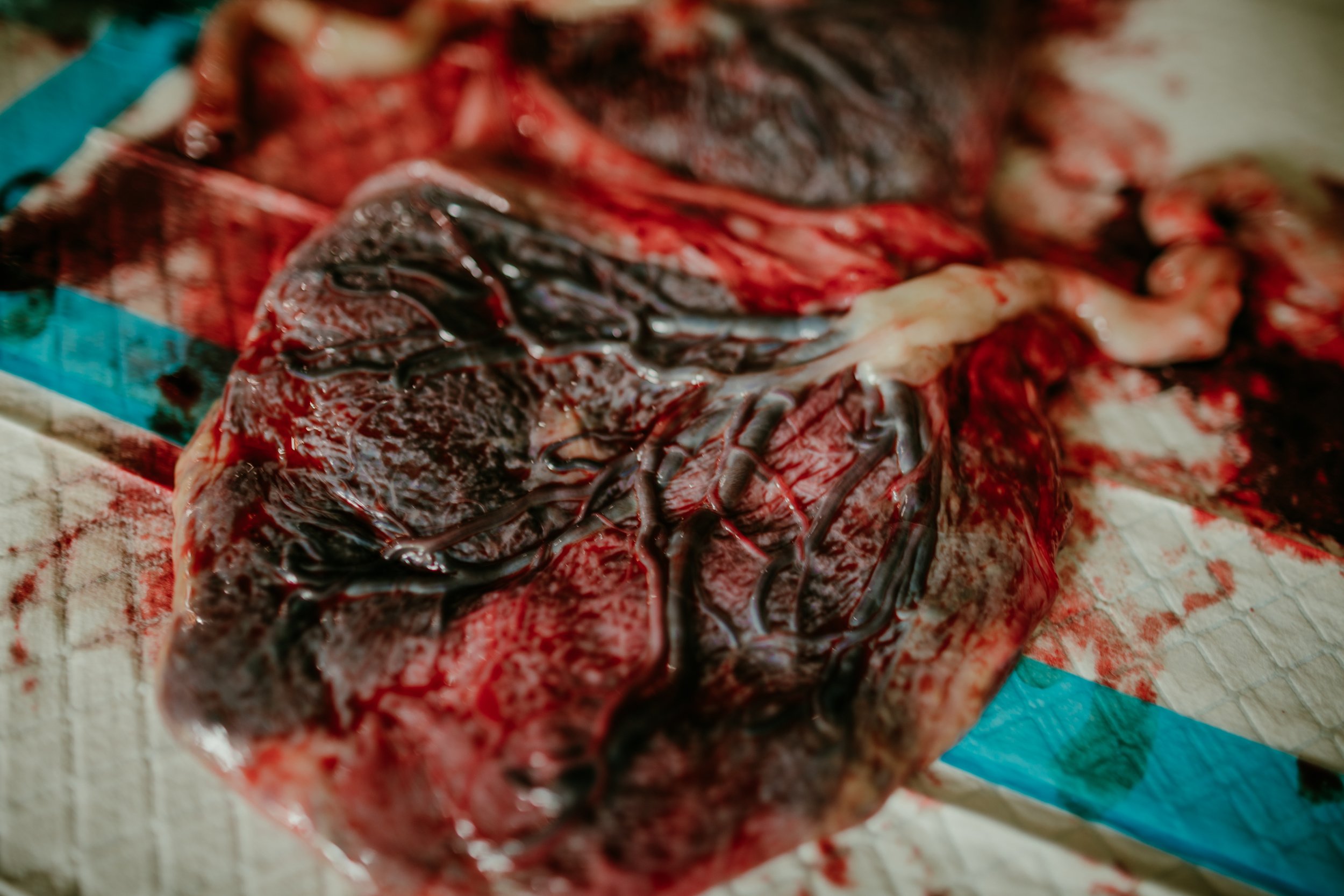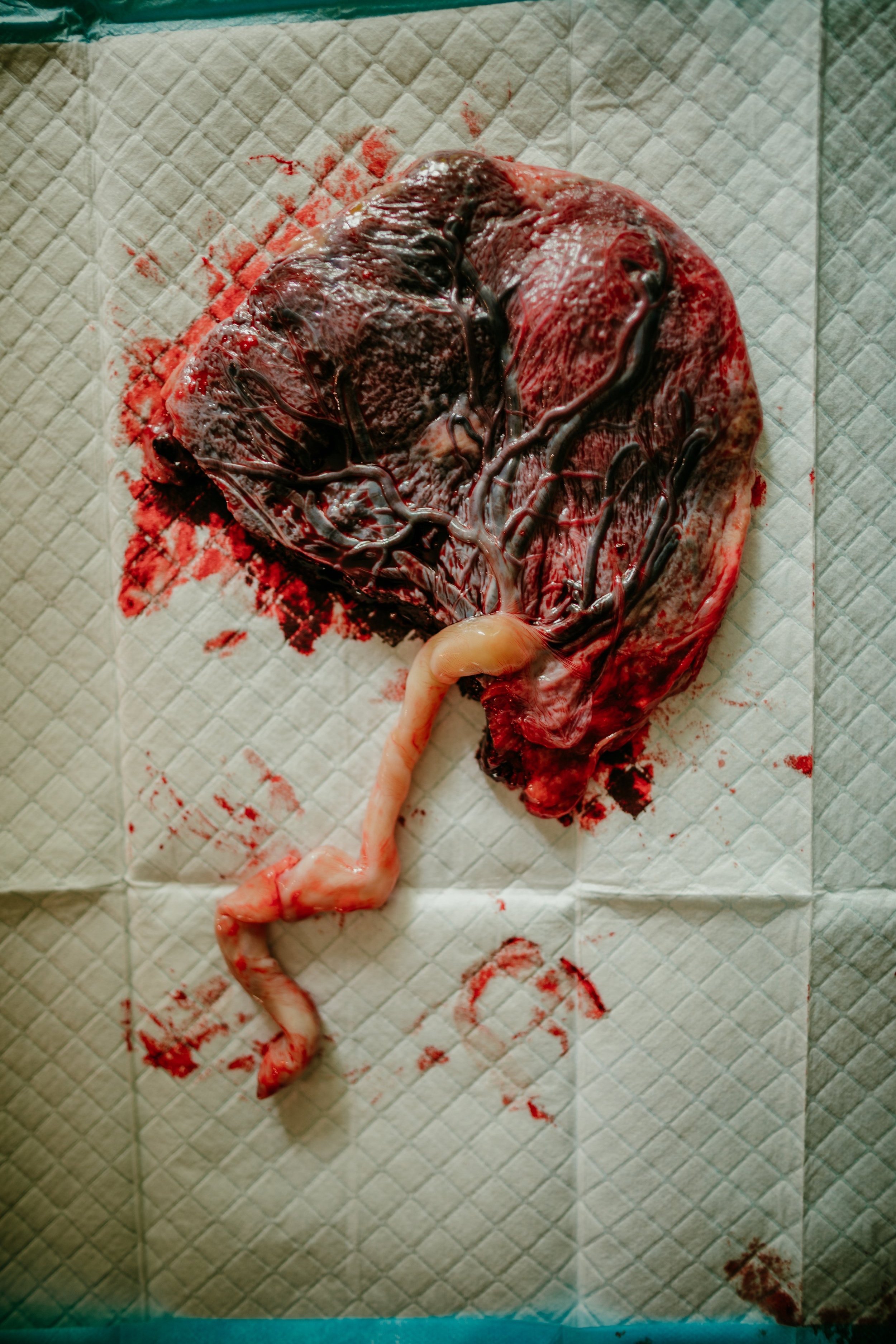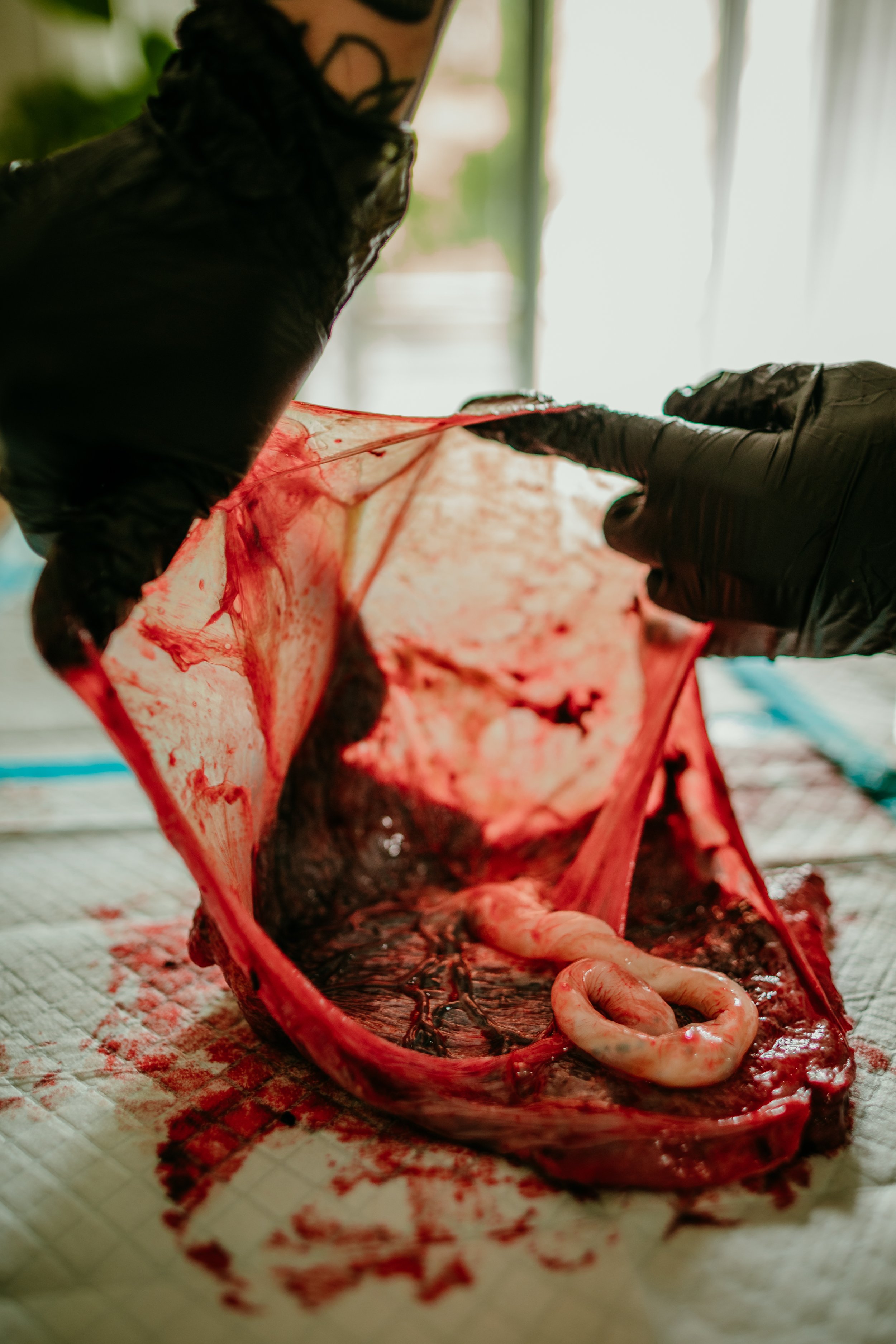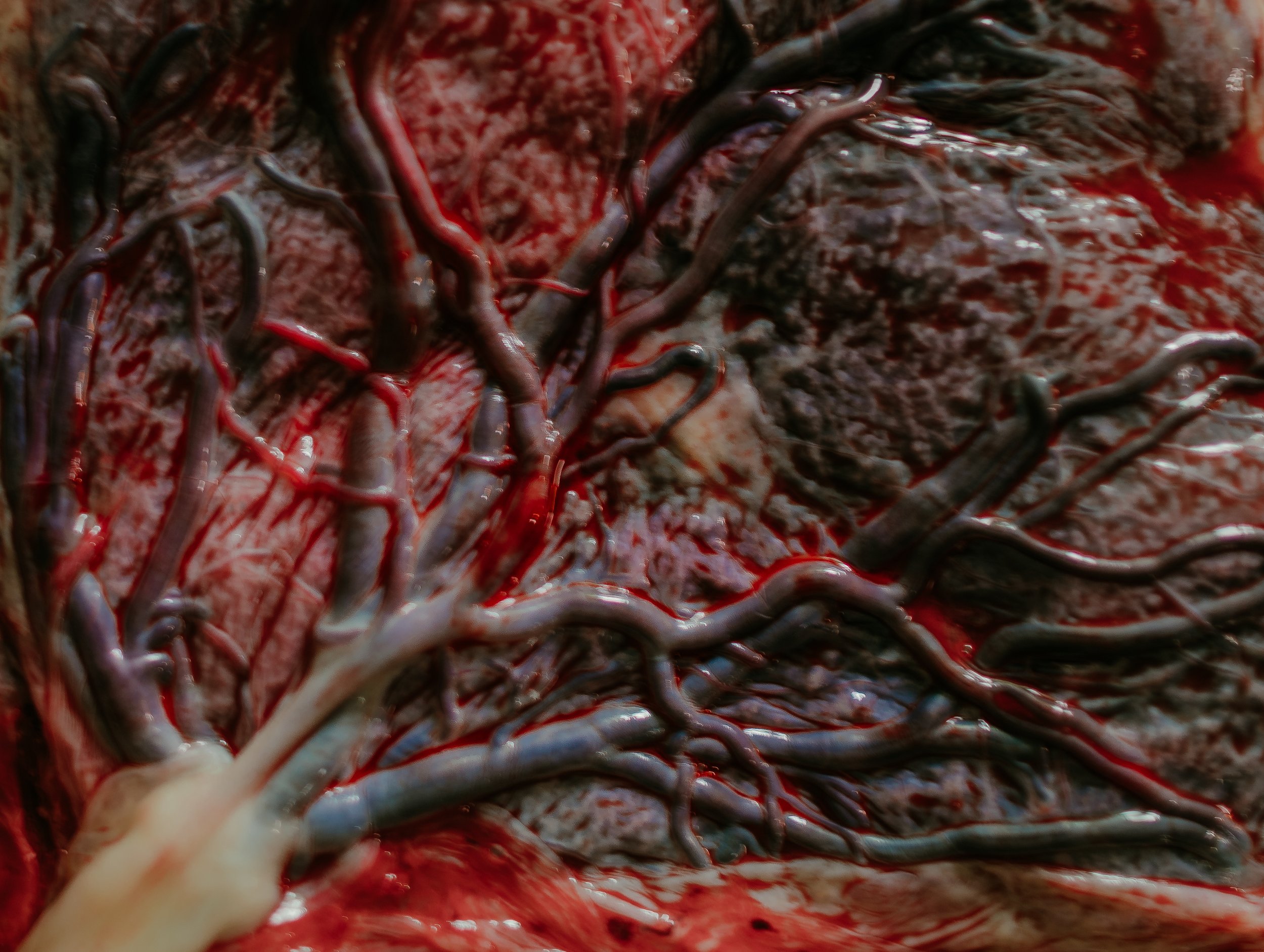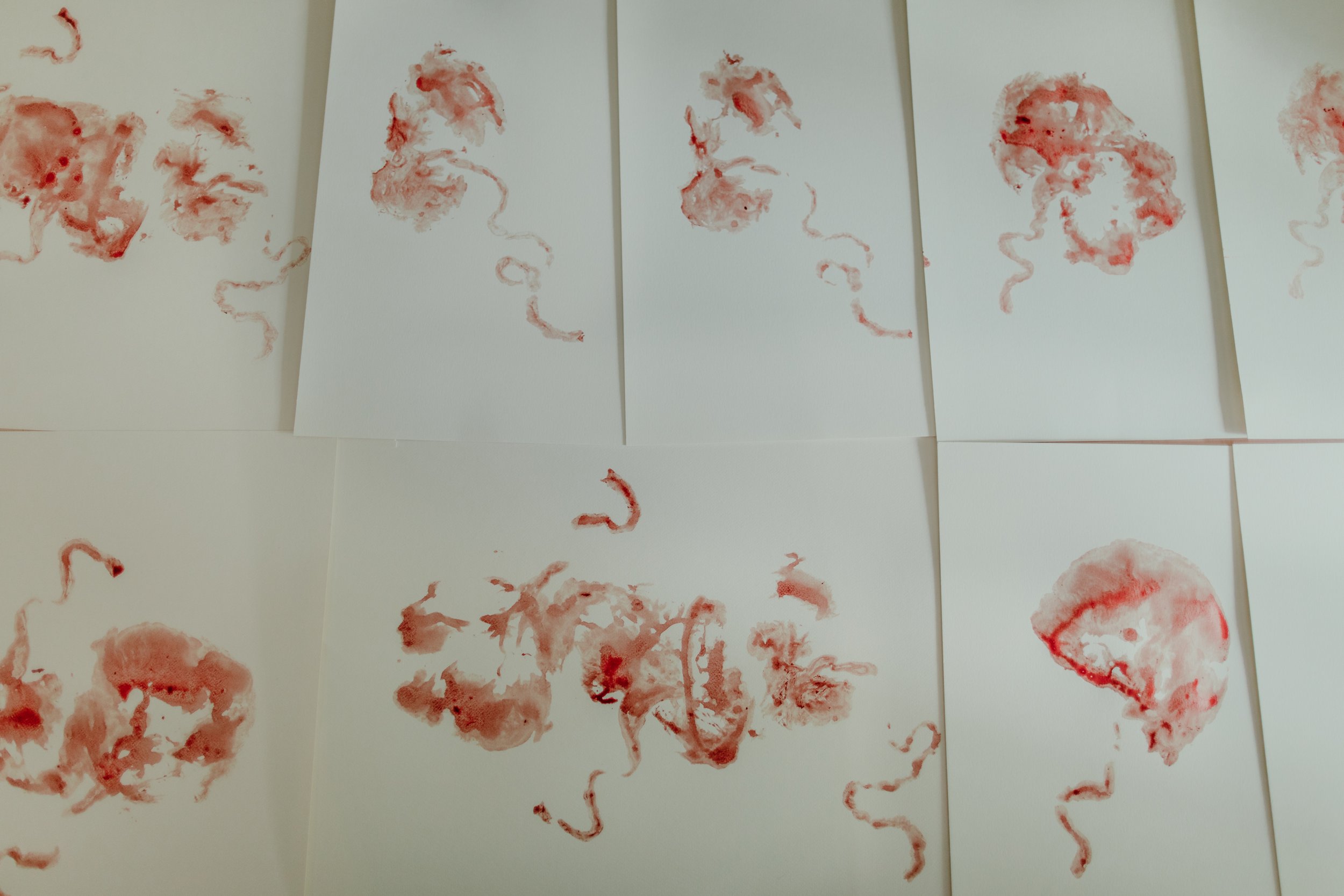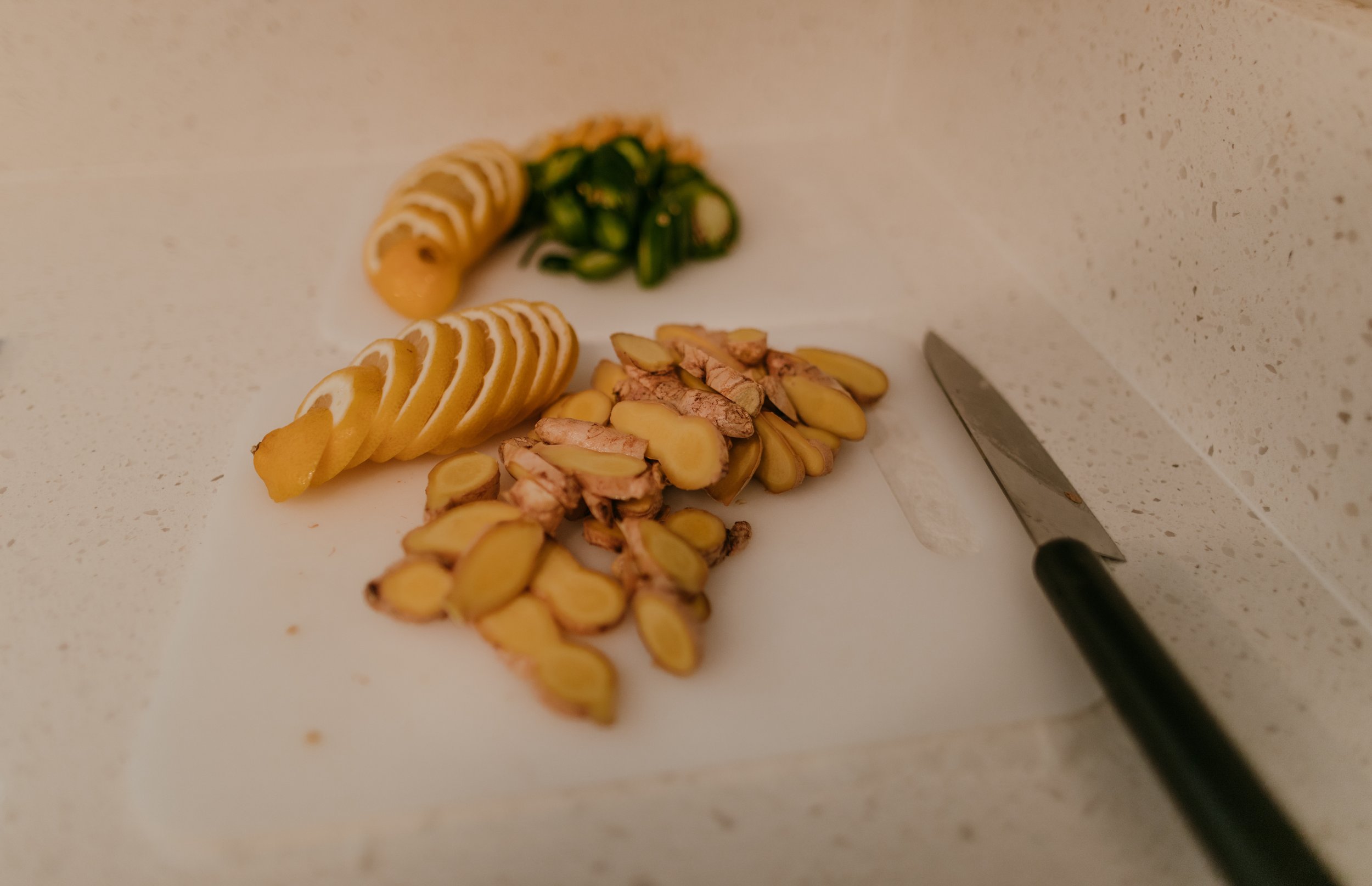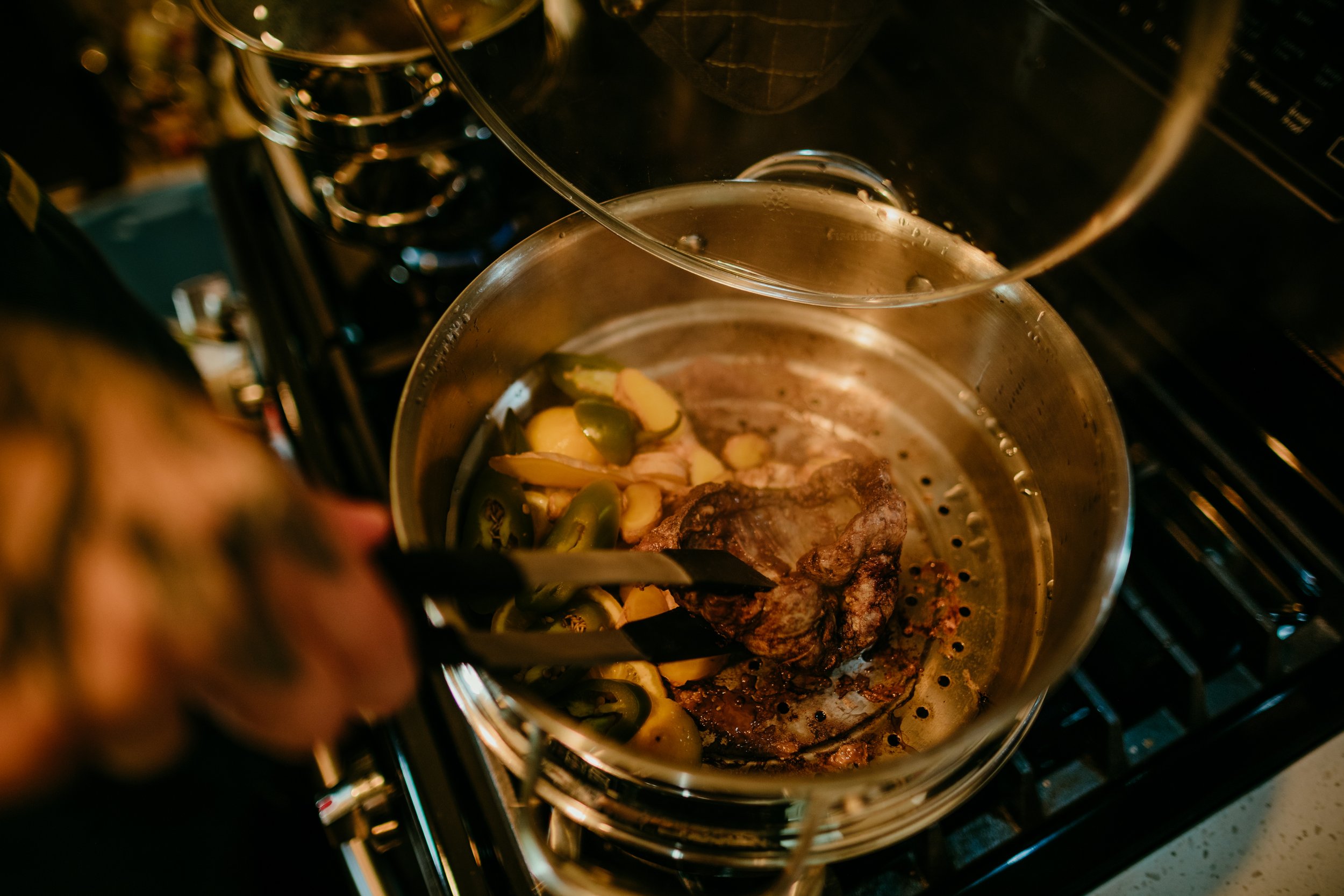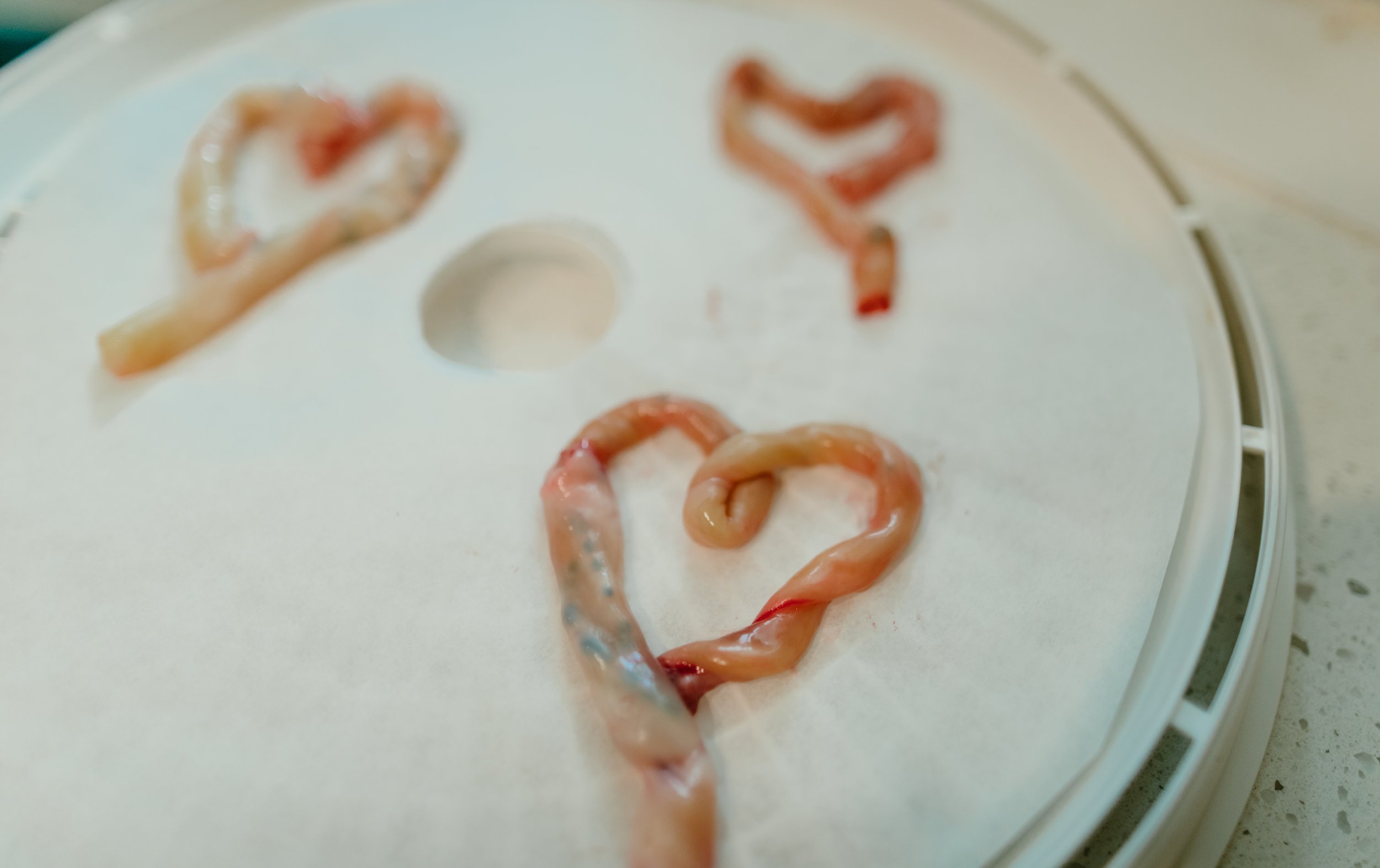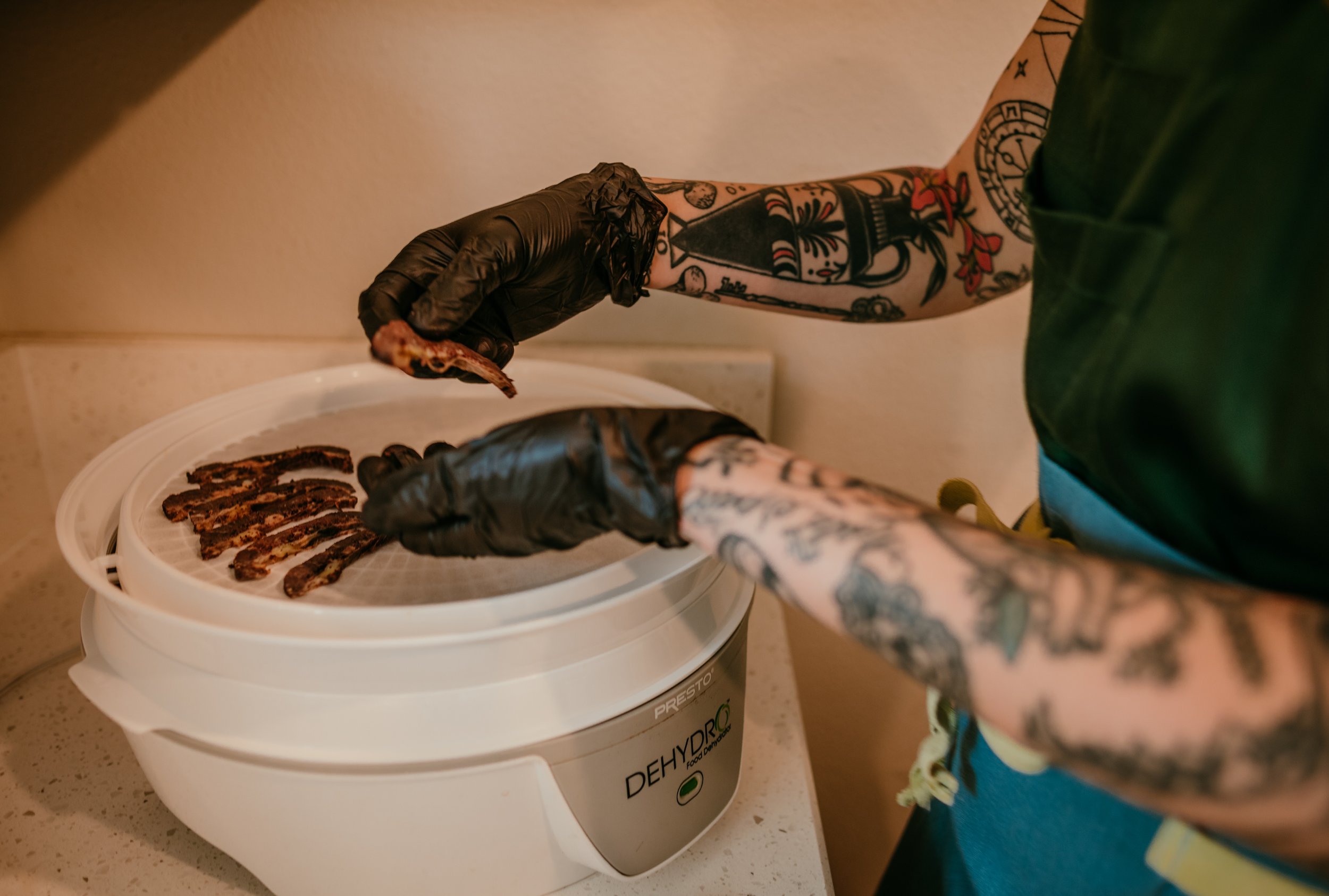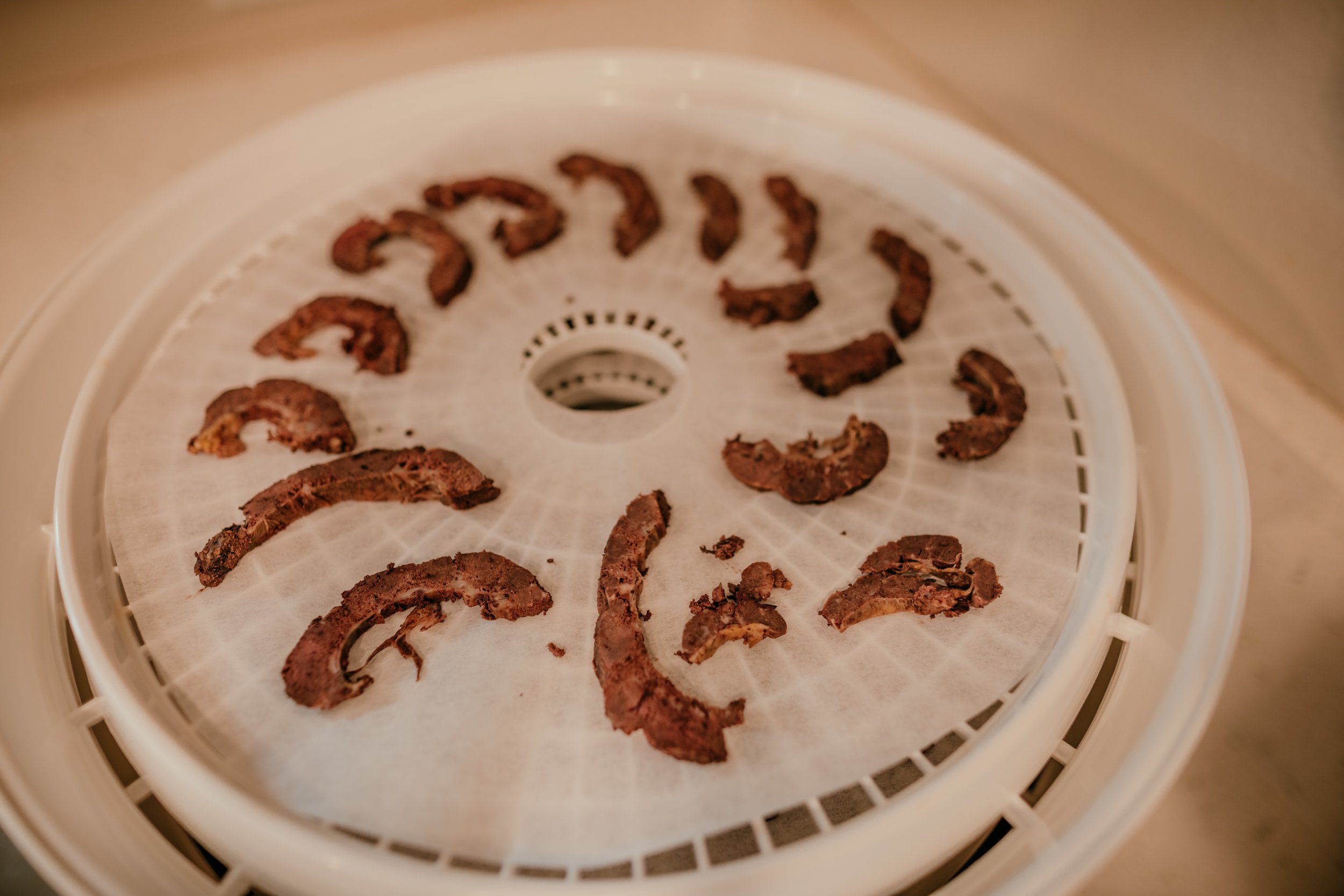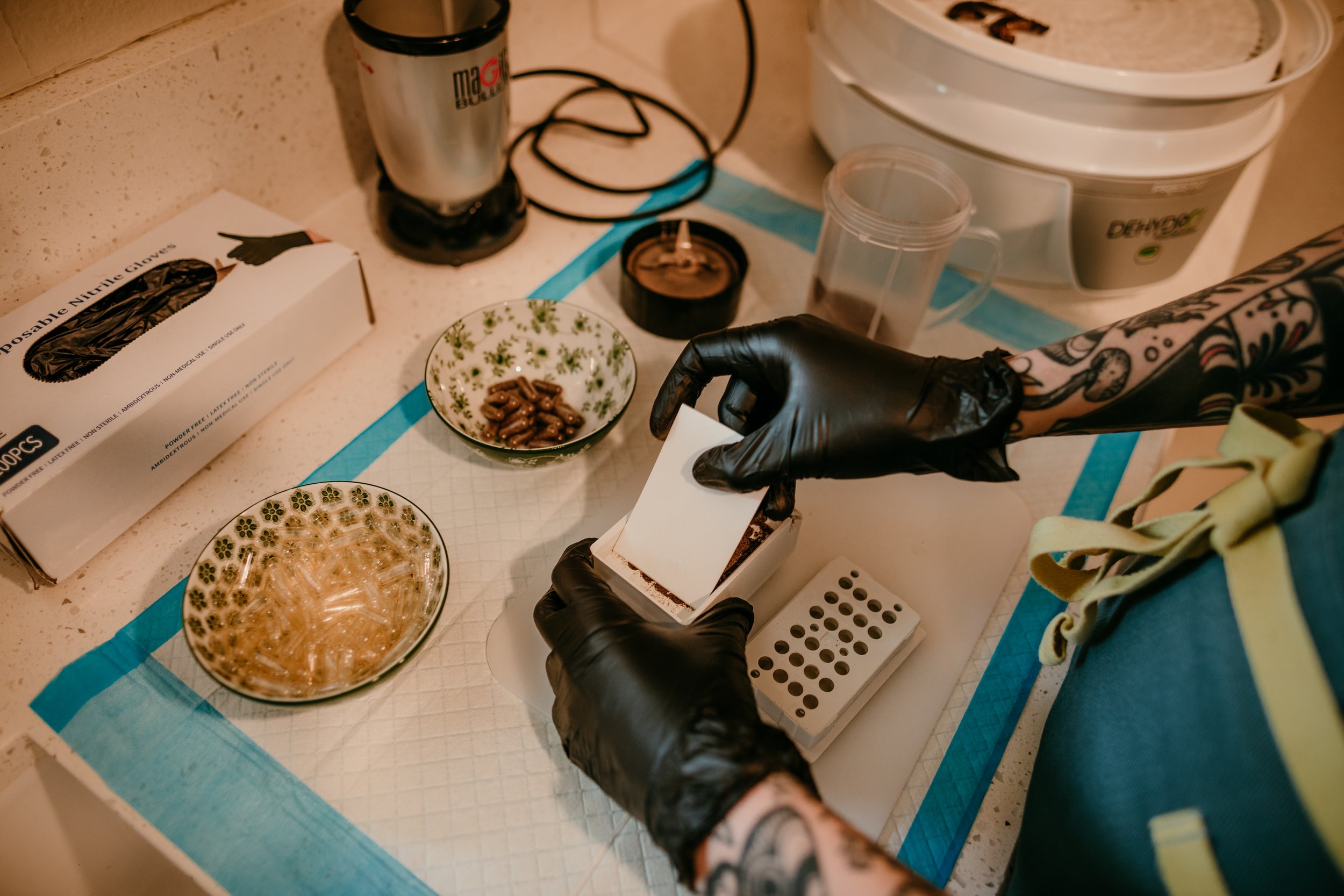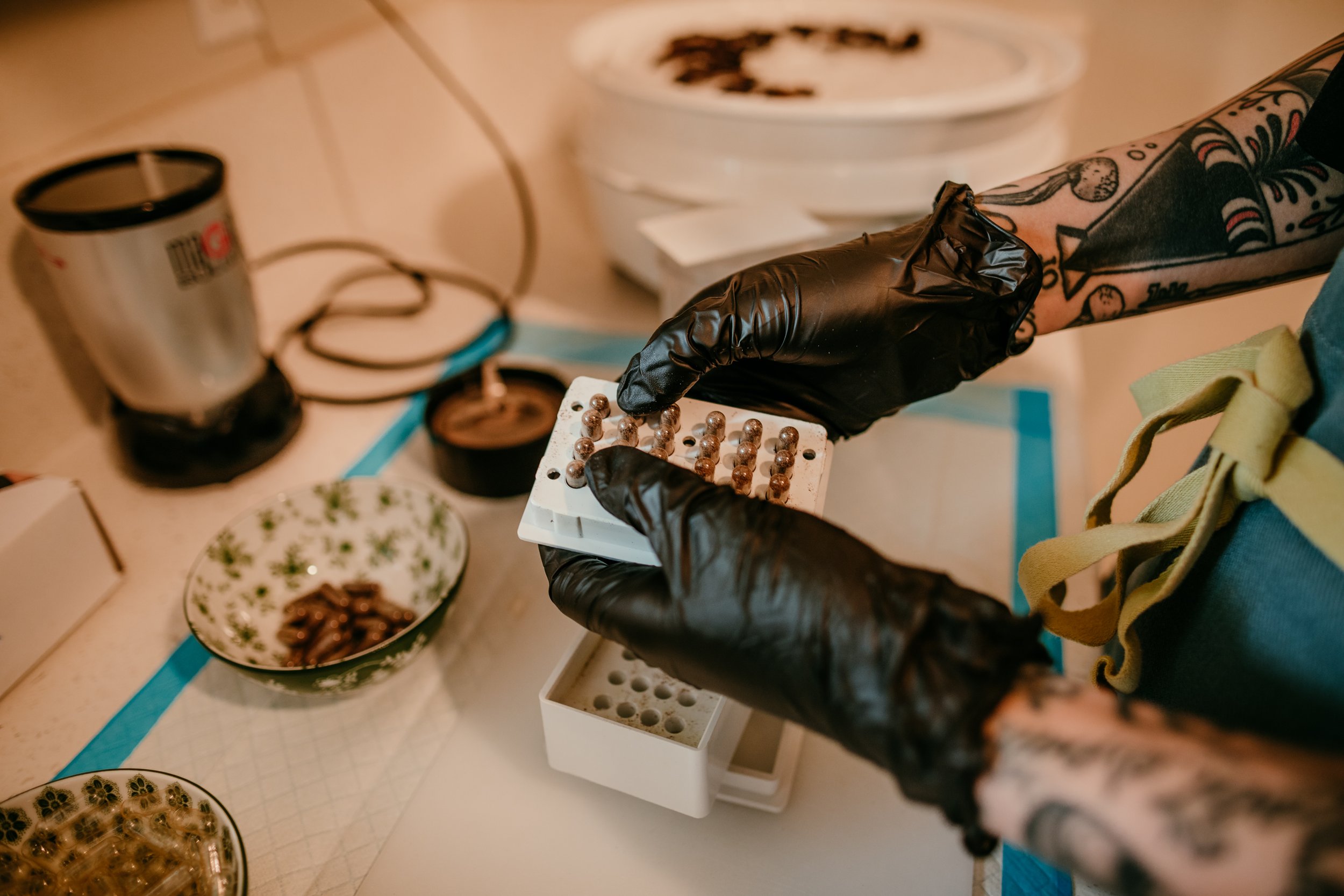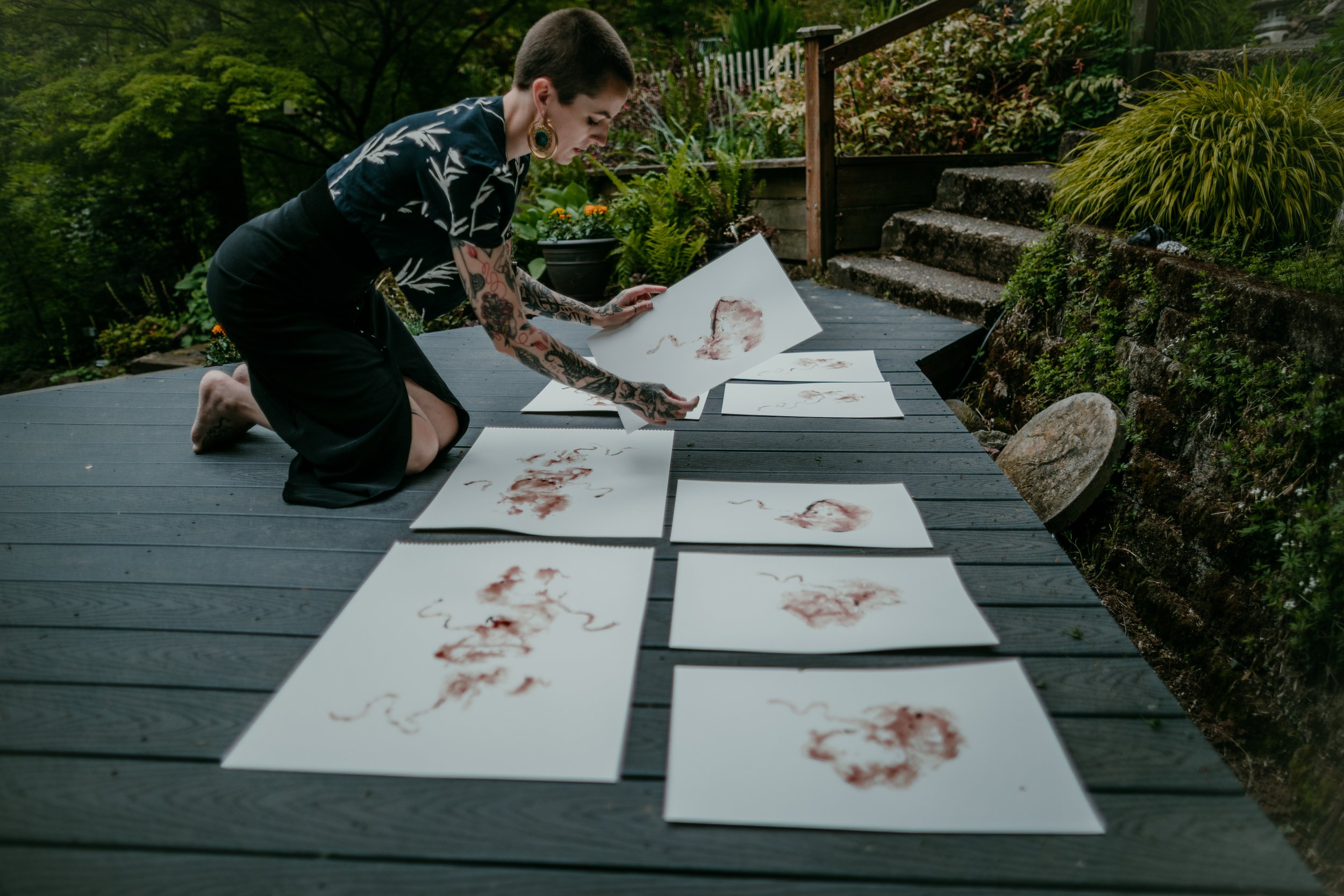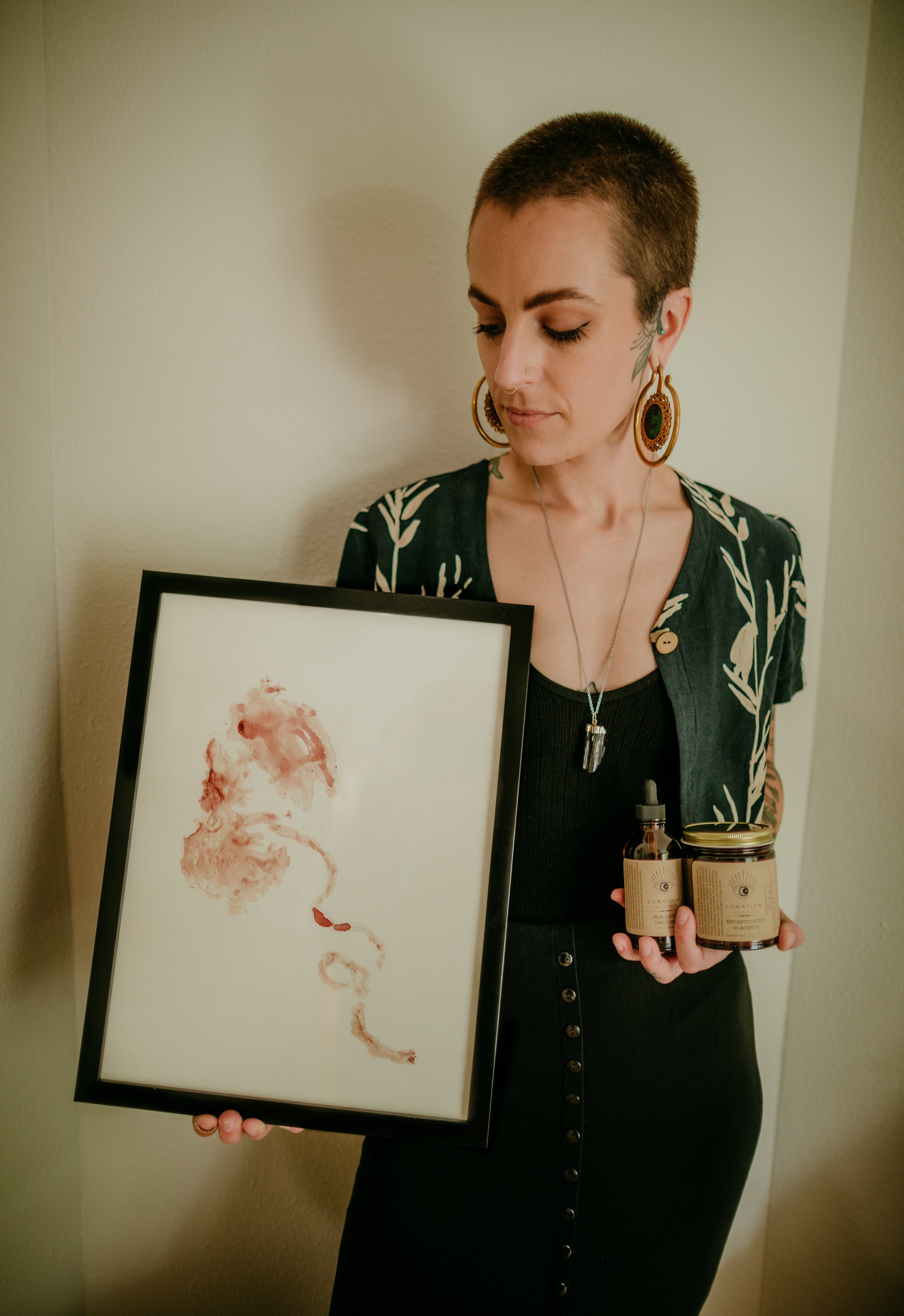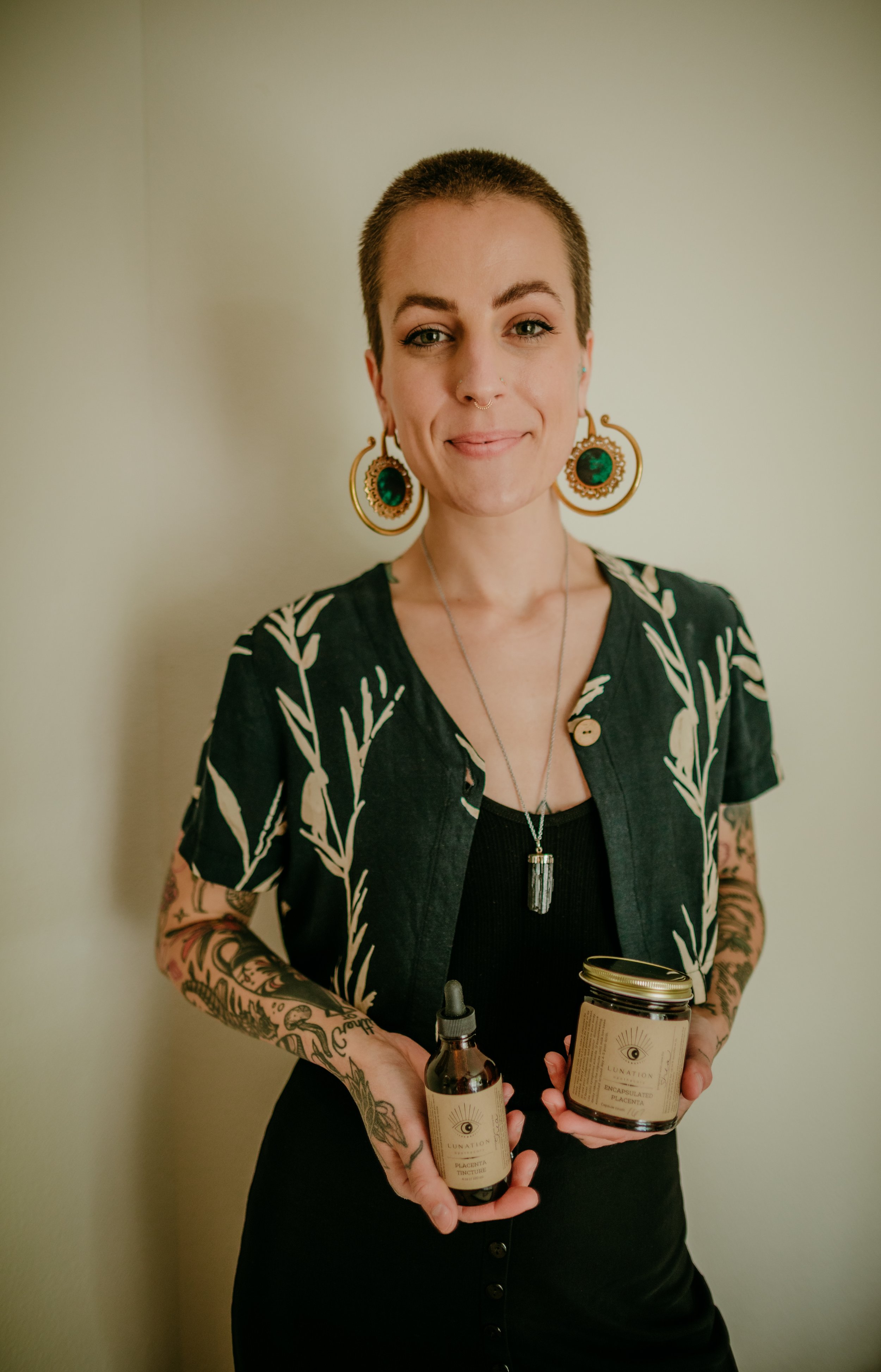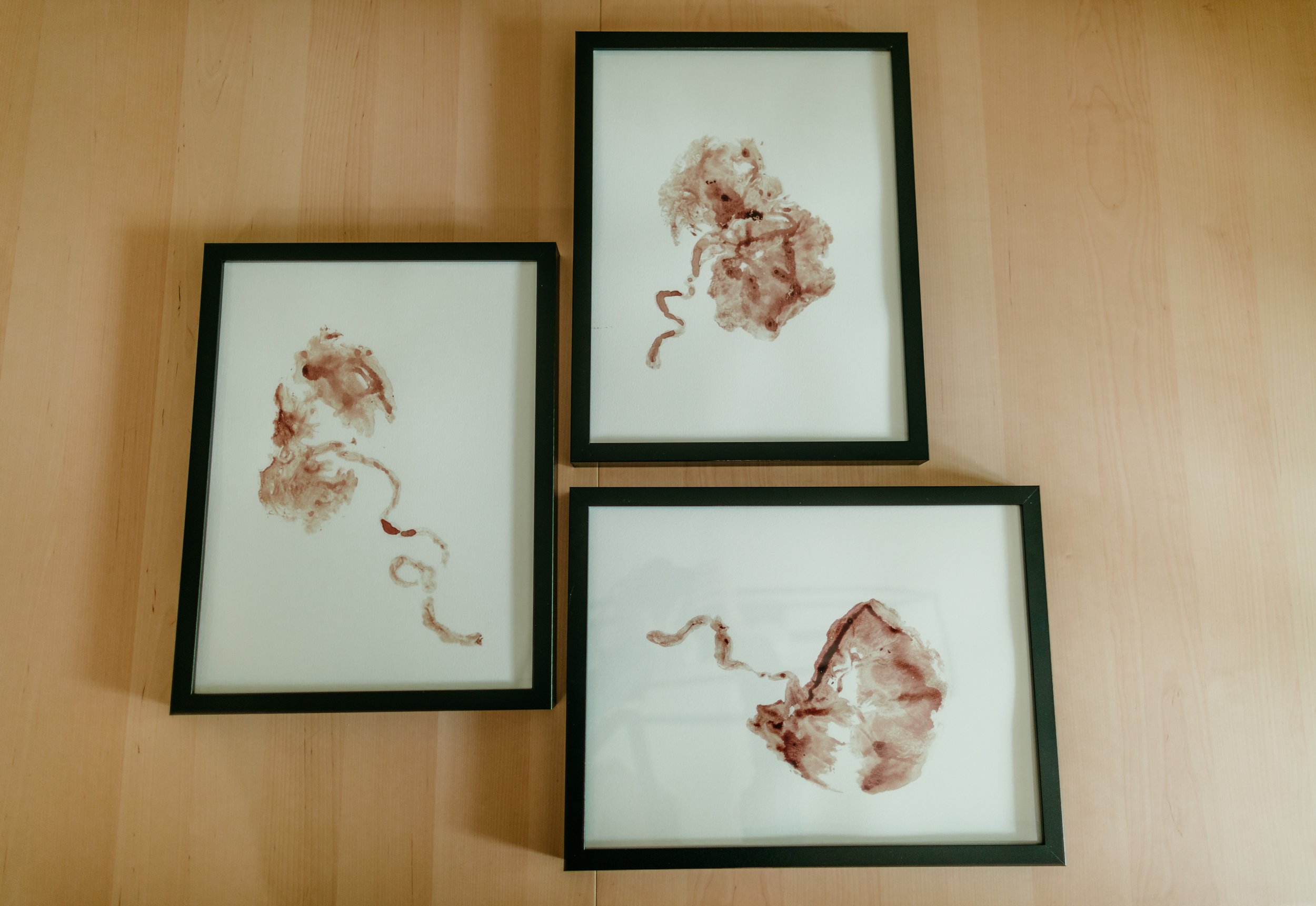Encapsulation & Tincture
Throughout your postpartum experience, in addition to caring for your baby, resting and nourishing your body should be your top priority. One way to support this tender time is by consuming capsules or tincture made from your own placenta. You will find information on this page about the process of encapsulation and tincturing, the possible benefits to your recovery and other useful information to help you decide if these options are right for you.

“Self-care is not self-indulgence, it is self-preservation.”
-Audre Lorde
What are the possible benefits of placenta encapsulation?: Many people who consume their placentas report higher levels of energy, increased milk supply and improved hormone balance that possibly aid in postpartum mood regulation. It should be noted that as of now, there have not been adequate studies to show official scientific data that support these antidotal claims. Since each person’s biology is so unique and placentas are not uniform in nature, creating a well balanced study to show unbiased results proves to be very difficult. That being said, it is up to each individual to decide if placenta consumption is a good option for them.
Is consuming my placenta considered safe?: In a 2018 joint study by UNLV and OSU, researchers reviewed around 23,000 birth records and found no increased risk to infants after the birth parents consumed their placentas. As long as proper safety, preparation and storage measures are taken, placenta consumption is considered a safe practice. Click here to read more about this study.
Is it common to consume the placenta after birth?: Most mammals will consume their afterbirth in order to clean their dens and not waste the nutrients and analgesic properties found within the placenta and amniotic sacs. For humans however, consuming placentas after birth has only been practiced for around a hundred years with a dramatic increase in the 1970s. Historically, it is far more common for various cultures to have buried or done something ceremonial with their placentas.
What process do you use for encapsulation?: First, I begin by sterilizing my work space with OSHA standards, using a 10:1 bleach solution. I then rinse the placenta thoroughly cleaning away any blood clots, removing the umbilical cord and any remaining amniotic sac. Next, I steam the placenta for 30 minutes with fresh ginger, lemon and chili pepper a western interpretation of the Traditional Chinese Method. The placenta is then sliced and placed in a dehydrator for 12 hours at 160 degrees. Lastly, the pieces are ground into a powder and put into capsules.
Common Questions Answered
If you would like to see the encapsulation process, slide through the gallery below of these incredible placentas from a triplet birth!
*Please be advised, the photos show blood and placentas in FULL detail which may be too raw for some viewers.
